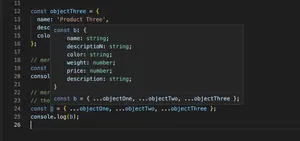Overview
TypeScript Error TS2322 is one of the common obstacles TypeScript developers might encounter, particularly when working with complex type structures and generics. Understanding the error and knowing how to address it effectively is crucial for maintaining the robustness and type safety of your TypeScript codebases. This guide will delve into the reasons behind this error and present solutions to overcome it.
Understanding the Error
The error TS2322 typically manifest when TypeScript’s type checker deduces that a type is not assignable to another type as expected. This can occur in various scenarios such as assigning values, function return types, and when working with generics. The underlying cause is TypeScript’s structural type system trying to enforce type safety based on the defined constraints.
Solutions
Solution 1: Refine Type Definitions
What you need to do are:
- Begin with a thorough review of your type annotations and interfaces to ensure they align with the data structures.
- Adjust the types in a way that they align with the structural expectations of your code.
- Provide specific properties, and use utility types like Partial, Pick, or Record if needed to constrain the object properties correctly.
Example:
interface ExpectedType {
prop1: string;
prop2?: number;
}
let wrongTypeInstance: any = {
prop1: 'Hello',
otherProp: true
};
let correctTypeInstance: ExpectedType = wrongTypeInstance; // TS2322 Error
Advantages: This solution can eliminate the bug at its source, by ensuring that the types accurately represent the data.
Limitations: Overly specific types might reduce flexibility or reusability of your functions or components.
Solution 2: Use Type Assertions
The process:
- Assuming you are certain of the type structure at runtime, you can use a type assertion to override TypeScript’s type checker concerns.
- This does not guarantee safety but tells the compiler you know what you’re doing.
- Type assertions should be carefully considered and used sparingly.
Example:
let wrongTypeInstance: any = {
prop1: 'Hello',
otherProp: true
};
let correctTypeInstance = wrongTypeInstance;
Advantages: Useful for cases where you have external data that you know matches your type structure but can’t change the source structure itself.
Limitations: Misusing type assertions can lead to runtime errors that the type checker will not catch.
Solution 3: Using Generics Properly
Solution description:
- Review generic constraints and make sure they are not too loose or too strict for your use cases.
- Double-check how generics are being instantiated and used throughout your application.
- Restructure the generics to ensure they support the intended variability of types without conflicting with the assigned subtypes.
Example:
function processData(data: T): T {
// Process data...
return data;
}
let result = processData(wrongTypeInstance); // TS2322 Error
Advantages: Generics promote code reusability and flexibility while maintaining type safety.
Limitations: It requires a deep understanding of TypeScript generics and may lead to complex type definitions.
Final Words
In conclusion, TypeScript Error TS2322 can often be resolved by refining type definitions, using type assertions cautiously, or tweaking your generics. Each solution serves a different scenario and choosing the right one depends largely on your specific code and requirements. Always strive for a balance between type flexibility and type safety to ensure your TypeScript code is both powerful and dependable.
